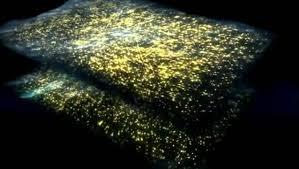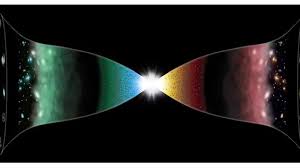Introduction
The idea of a multiverse, a collection of multiple or even infinite universes, has fascinated physicists, philosophers, and science fiction enthusiasts alike. Several theories attempt to explain how and why such universes might exist. Two prominent physicists, Max Tegmark and Brian Greene, have classified multiverse theories into different levels and types. This document explores their classifications, providing an overview of each proposed model.
Tegmark’s Four-Level Classification
Level I: An Extension of Our Universe
The observable universe has a radius of approximately 46 billion light-years, but this does not imply the actual universe ends at this boundary. If the universe is infinite, it must contain infinite Hubble volumes (regions beyond our observable horizon) with the same physical laws as ours. Given that the number of particles in the observable universe is estimated at 10^97, and these particles can be arranged in (10^97)! ways, it follows that identical universes must exist somewhere. This theory of the multiverse encounters the least resistance in scientific circles.
Level II: Universes with Different Physical Constants
In this scenario, cosmic inflation—an exponential expansion of space—continues indefinitely, forming separate bubble universes. These universes may have different physical constants due to variations in how symmetry was broken when the Higgs field settled into a particular state. Since different regions of space could undergo different symmetry-breaking mechanisms, this could lead to diverse physical laws across universes.
Level III: The Many-Worlds Interpretation of Quantum Mechanics

Quantum mechanics allows particles to exist in superpositions of states, represented by wave functions. When an observation is made, the wave function collapses into a single state. The many-worlds interpretation posits that all possible states actually occur, each within its own distinct universe. For example, rolling a die leads to the creation of six universes, one for each possible outcome. This suggests that every quantum event spawns a new universe where all possible outcomes happen.
Level IV: The Ultimate Ensemble
This is the most radical level of Tegmark’s classification, proposing that all mathematically possible universes exist. These universes may operate under entirely different physical laws. However, defining what constitutes a mathematical structure remains a challenge, as pointed out by Jürgen Schmidhuber.
Brian Greene’s Multiverse Typology
Quilted Universe
If the universe is infinite, then every possible configuration of particles must occur somewhere. This model suggests that our universe consists of an infinite number of Hubble volumes, each with identical or varied particle arrangements, much like a patchwork quilt.
Inflationary Universe
Similar to Tegmark’s Level II classification, this theory holds that inflation occurs eternally, forming bubble universes. Each bubble universe may feature different physical laws, dimensions, or fundamental constants, and some may even resemble our own.
Brane Universe

According to string theory, our universe exists as a three-dimensional membrane (brane) floating within a higher-dimensional space called the bulk. Other branes representing separate universes may exist in parallel, separated by extra dimensions. String theory suggests up to seven extra spatial dimensions, reinforcing the brane multiverse hypothesis.
Cyclic Universe
This theory, closely related to the brane model, proposes that two parallel branes are drawn together by an unknown force over trillions of years. When they collide, they release vast amounts of energy, causing a new Big Bang. This cycle of expansion, collision, and rebirth continues indefinitely.
Landscape Multiverse
String theory postulates that fundamental particles and forces emerge from tiny vibrating strings. For the mathematics to work, 11 dimensions are required. These extra dimensions compactify into different vacuum states, potentially forming up to 10^500 universes, each with unique laws of physics due to quantum fluctuations.
Holographic Multiverse
The holographic principle arises from black hole physics, which suggests that all information about objects falling into a black hole is stored on its event horizon. If this principle applies to the entire universe, then all three-dimensional information may be encoded on a distant two-dimensional cosmic boundary. This could imply that multiple distinct projections, or universes, exist within a higher-dimensional reality.
Simulated Universe
The simulation hypothesis suggests that an advanced civilization could simulate entire universes using powerful computing resources. If such a civilization exists and has the capability and willingness to run multiverse simulations, then our universe itself could be an artificial construct.
Twin-World Theory

The observable universe contains far more matter than antimatter, despite expectations that equal amounts should have been created during the Big Bang. This imbalance, known as baryon asymmetry, has led some theorists to propose a mirror universe composed predominantly of antimatter, which arose from the same Big Bang event. In this twin-world scenario, the mirror universe would exhibit the same fundamental forces and structures as our universe but in reverse. While direct interaction between the two universes may be impossible due to annihilation risks, there may be subtle gravitational or quantum effects that link them. Scientists continue to search for evidence of such a universe, potentially through the detection of unusual cosmic ray patterns or gravitational anomalies.
Black Hole Multiverse Theory
According to general relativity, when matter collapses into a black hole, it forms a singularity where density and gravity become infinite. Some theorists suggest that a singularity could serve as the starting point for a new universe. This process, proposed by Lee Smolin in his Cosmological Natural Selection hypothesis, could generate multiple universes. Additionally, the Einstein-Rosen bridge (a theoretical wormhole) may provide a connection between black holes and alternate regions of spacetime or even entirely separate universes. If true, every black hole in our universe could be a gateway to another universe, where the laws of physics might differ depending on the conditions within the black hole’s singularity. Observing black hole behavior and potential quantum signatures of other universes remains an ongoing challenge in modern physics.
Conclusion
The concept of a multiverse remains speculative, yet it offers intriguing explanations for the fundamental nature of reality. Tegmark’s and Greene’s classifications provide structured frameworks for exploring this idea. While direct evidence is lacking, advances in quantum mechanics, cosmology, and string theory may one day provide insights into whether we exist within a single universe—or one of infinitely many. Whether through quantum branching, cosmic inflation, or extra-dimensional branes, the multiverse remains one of the most profound and mysterious scientific frontiers.
sources:
https://www.scientificamerican.com/article/heres-why-we-might-live-in-a-multiverse
https://bigthink.com/hard-science/4-different-types-multiverse
https://arxiv.org/abs/hep-th/0209261
https://www.npr.org/2011/01/24/132932268/a-physicist-explains-why-parallel-universes-may-exist